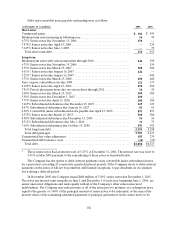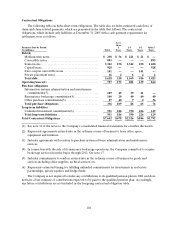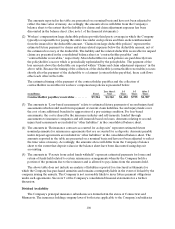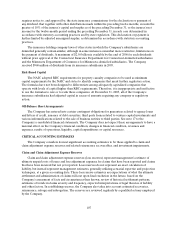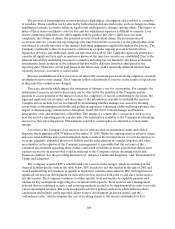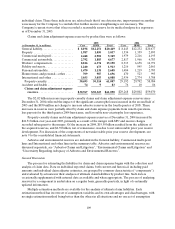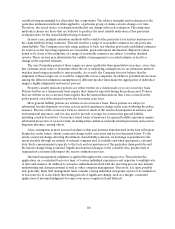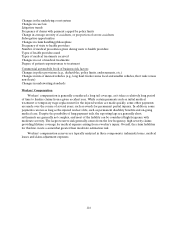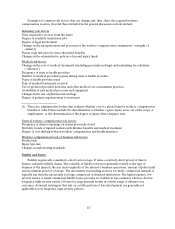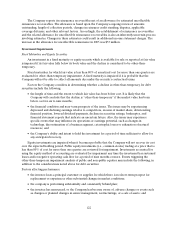Travelers 2005 Annual Report Download - page 124
Download and view the complete annual report
Please find page 124 of the 2005 Travelers annual report below. You can navigate through the pages in the report by either clicking on the pages listed below, or by using the keyword search tool below to find specific information within the annual report.
112
Risk factors
The major causes of material uncertainty (“risk factors”) generally will vary for each product line, as
well as for each separately analyzed component of the product line. In some cases, such risk factors are
explicit assumptions of the estimation method and in others, they are implicit. For example, a method may
explicitly assume that a certain percentage of claims will close each year, but will implicitly assume that the
legal interpretation of existing contract language will remain unchanged. Actual results will likely vary from
expectations for each of these assumptions, resulting in an ultimate claim liability that is different from that
being estimated currently.
Some risk factors will affect more than one product line. Examples include changes in claim
department practices, changes in settlement patterns, regulatory and legislative actions, court actions,
timeliness of claim reporting, state mix of claimants, and degree of claimant fraud. The extent of the
impact of a risk factor will also vary by components within a product line. Individual risk factors are also
subject to interactionswith other risk factors within product line components.
The effect of a particular risk factor on estimates of claim liabilities cannot be isolated in most cases.
For example, estimates of potential claim settlements may be impacted by the risk associated with
potential court rulings, but the final settlement agreement typically does not delineate how much of the
settled amount is due to this and other factors.
The evaluation of data is also subject to distortion from extreme events or structural shifts, sometimes
in unanticipated ways. For example, the timing of claims payments in one geographic region will be
impacted if claim adjusters are temporarily reassigned from that region to help settle catastrophe claims in
another region.
While some changes in the claim environment are sudden innature (such as a new court ruling
affecting the interpretation of all contracts in that jurisdiction), others are more evolutionary. Evolutionary
changes can occur when multiple factors affect final claim values, with the uncertainty surrounding each
factor being resolved separately, in step-wise fashion. The final impact is not known until all steps have
occurred.
Sudden changes generally cause a one-time shift in claim liability estimates, although there may be
some lag in reliable quantification of their impact. Evolutionary changes generally cause a series of shifts in
claim liability estimates, as each component of the evolutionary change becomes evident and estimable.
Management’s estimates
At least once per quarter, Company management meets with its actuaries to review the latest claim
and claim adjustment expense reserve analyses. Based on these analyses, management determines whether
its ultimate claim liability estimates should be changed. In doing so, it must evaluate whether the new data
provided represents credible actionable information or an anomaly that will have no effect on estimated
ultimate claim liability. For example, as described above, payments may have decreased in one geographic
region due to fewer claim adjusters being available to process claims. The resulting claim payment patterns
would be analyzed to determine whether or not the change in payment pattern represents a change in
ultimate claim liability.
Such an assessment requires considerable judgment. It is frequently not possible to determine whether
a change in the data is an anomaly until sometime after the event. Even if a change is determined to be
permanent, it is not always possible to reliably determine the extent of the change until sometime later.
The overall detailed analyses supporting such an effort can take several months to perform. This is due to
the need to evaluate the underlying cause of the trends observed, and may include the gathering or
assembling of data not previously available. It may also include interviews with experts involved with the
underlying processes. As a result, there can be a time lag between the emergence of a change and a


